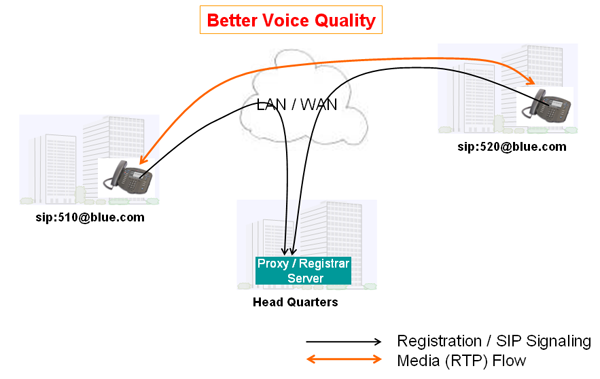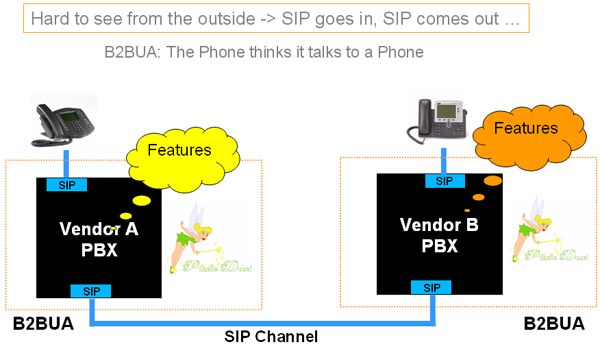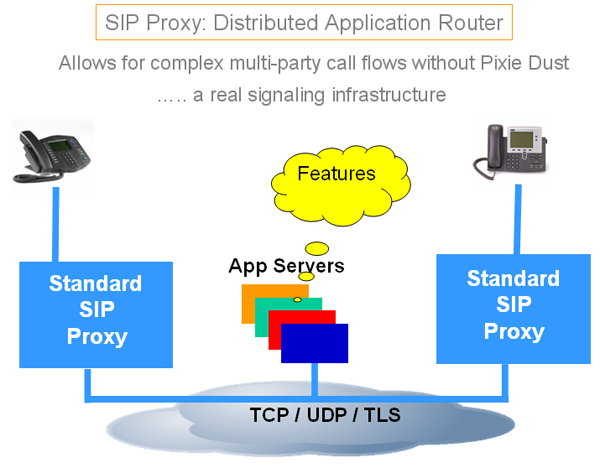Better Voice Quality
sipXecs Offers Superior Voice Quality
The theory is easy: You move from a TDM solution to VoIP and expect the same voice quality. This article attempts to highlight some of the difficulties experienced in real deployments. You might also wonder why so many other IP PBX systems claim to be SIP standards compliant but violate the most basic principle of SIP: The separation of signaling and media.
Consider the following example You have a headquarter location and two branch offices. The IP PBX is located at headquarters. A call is made from an extension at branch office 1 to an extension in branch office 2. The call setup signaling is handled by the IP PBX at headquarters, but where does audio go? _"If your audio follows the same path as signaling does, you are in trouble. If audio has to go in and out of the IP PBX server, your trouble just got worse." |
|
While the separation of signaling and media seems an obvious requirement in the example above, it is also critical if a VoIP deployment is on just one local LAN. By definition, call quality can only get worse if the media stream is funneld through additional systems. The network interface used gets congested and therefore limits the total number of simulaneous calls that can take place to about 50 to 75. CPU cycles in your IP PBX server get tied up unnecessarily. A single point of failure is created where all the calls are disconnected should the PBX server fail. And finally, the IP PBX server has to mediate during the codec negotiation phase during call setup.
The reason for all this unnecessary complication and trouble can be found in the way first generation IP PBX systems are typically built.
First Generation IP PBX Architecure
|
The Phone Thinks it Talks to a PhoneSIP is only used as a transport point-to-point and the IP PBX behaves like a phone. |
By far not the only example is Asterisk but, because of its open source model, it is easy to examine. Based on a Back-to-Back User Agent (B2BUA) design, all links are point-to-point, making phones believe they talk to another phone even though they talk to the PBX. The PBX becomes a big monolythic block where everything has to go through and features are implemented in a proprietary way. While in the TDM world these PBXs were built on expensive fault tolerant HW, using an inexpensive PC server does not serve this model well as it laks scalability, resiliency and fault-tolerance. IAX, the Asterisk trunking protocol is specifically designed to bundle signaling and media in one fixed connection. The result is at best neutral when it comes to voice quality, but more often than not it is worse than what you would get with standard SIP.
Second Generation IP PBX Architecture
IMS for the EnterpriseA SIP based application router (SIP Proxy) is the heart of the system. Strict separation of signaling and media is a given. The phone talks to a proxy that routes the call through as many additional proxies as needed until the destination phone is reached. |
|


